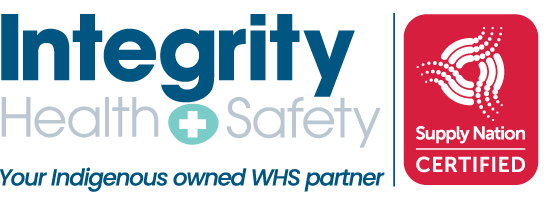If you’re like most Australians, you probably think of a heart attack as something that happens to older people – after all, heart disease is the leading cause of death in our country.
But the fact that often comes as a shock to families and friends is that many of sudden cardiac deaths (SCDs) occur in seemingly healthy and young people. In fact, up to five Australians aged 35 and under die from SCD each week!
In this post, we will explore the risk factors for sudden cardiac arrest (SCA) and look at ways we can prevent these tragedies from happening. Stay safe and heart healthy everyone!
Why do cardiac arrests happen?
SCAs happen when the heart starts experiencing arrythmia or abnormal heart rhythm, A.K.A., when the heart’s electrical system that controls the rate and rhythm of your heartbeat is no longer functioning correctly.
When a patient is not responsive and breathing, chances are they’re in cardiac arrest and their heart has gone out of rhythm. A heart beating normally is in sinus rhythm which means the heart is working effectively and pushing blood all around the body.
When someone goes into arrest, their heart is no longer pushing blood around the body, and it goes into what’s called ventricular fibrillation (VF) or ventricular tachycardia (VT).
A heart in fibrillation that is not treated immediately goes into asystole, or more commonly known as flatline. This generally happens 10 minutes after someone stops breathing, and the chance of survival has decreased drastically less than 1%.
We need to talk about cardiac arrest in young adults
It seems that young people who suffered sudden cardiac death often seemed perfectly healthy. And it is an ongoing challenge to diagnose in advance becasuse there usually are no symptoms.
For adults over 35, coronary artery disease (where major blood vessels are narrowed and damaged) is often the culprit. But for younger and healthier folks, a third of SCD cases can be attributed to genetics while the remaining two thirds are still a major unknown.
Can teenagers have heart attacks?
Yes and it is rare; however heart attack in teens are more common than we think. In fact, kids can have heart attacks too!
SCA claims the lives of 2-3 young Australians every week — making it a leading cause of death in Australian children and teens.
What causes heart attacks in young people?
When you look up “sudden heart attack healthy person” on search engines, you would usually see sources saying the victim is young and was engaged in a physically strenous activity (e.g., exercising at a gym, playing sports in the field) when the SCA happened.
Often, cardiac arrest in children and teenagers that are otherwise healthy happen during physical activity. Common causes of cardiac arrest in young adults include an underlying (and most likely undiagnosed) heart condition they were born with. Genetic predispositions to high cholesterol is also one of the leading causes of cardiac arrest in children.
Recent studies have also shown that sudden cardiac arrest in young athletes is generally caused by hypertrophic cardiomyopathy (HCM) — a disease in which the heart muscle becomes thickened or hypertrophied, thereby making it harder for the heart to pump blood. Many people who have hypertrophic cardiomyopathy don’t usually display any symptoms. This results in this disease going undiagnosed.
How to prevent cardiac arrest among young and healthy people
The first preventive measure is to have early diagnosis for kids and young adults, especially if they are frequently exposed to extremely physical activities like sports. Knowing is the first step to preventing life-threathening cardiac events. Through this we can use the appropriate treatments like medication, surgery, and other less invasive procedures and implantable devices.
The next thing to do — and perhaps the most important one — is to have defibrillators in public places. SCAs that happen outside of hospitals only have a 12% survival rate, accounting for approximaely 22,000 annual deaths in Australia. That is why we recommend buying a defibrillator as having one always on the ready is truly life-saving.
Bystander action involving quick administration of CPR (cardiopulmonary resuscitation) within 3-5 minutes after collapse, coupled with the use of an AED, vastly increases the chance of survival for the affected individual — from 6% up to 74%.
What are defibrillators used for
Defibrillators are medical devices used to treat someone in sudden cardiac arrest. They send an electric pulse or shock to the heart to restore a normal heart beat or bring it back to sinus rhythm.
Automated external defibrillators (AEDs) are a kind of defibrillator ideal for public access areas. An AED (defibrillator) is a lightweight, battery-operated, portable defibrillator with sticky pads instead of large paddles like the defibs found in clinical settings.
What does a defibrillator do
A defibrillator analyses and fault-finds the heart rhythm. It will not shock sinus rhythm, meaning a heart that beats normally and does not need a shock will not be given an electric pulse by the defibrillator. In the same vein, a defibrillator also cannot shock a heart that is already in asystole or has completely stopped.
To make a defibrillator work, you have to stick the pads on the patient’s bare chest like you would wear a driver’s seatbelt: one pad goes on to the top right hand side of the chest or the thoracic cavity, and the other pad goes on to the bottom left hand side.
Once the pads are on, the defibrillator will prompt the first responder to stand clear as it will now start fault finding the heart, then it will decide on whether or not to administer a shock.
Where to buy an AED — Integrity Health & Safety
At Integrity Health & Safety, a Supply Nation certified Indigenous owned business, we strive to be an ethical, sustainable and socially responsible company that provides our clients with leading WH&S products and services while leveraging these relationships to support and improve Indigenous health care capability.
Using our many years’ experience as Paramedics and Healthcare workers, we are able to advise on best practice for defibrillators as part of your home, community or workplace first aid kit preparedness and help to empower your staff to feel confident to act in an emergency.




Comments are closed.